Hybrid Cloud Computing: Definition, Examples, Benefits Explained in 2025
Hybrid cloud computing is a multi-environment model that merges the private cloud and public cloud, taking advantage of the best of both models. If you’re looking to adopt hybrid cloud, explore this guide for insights into its benefits, drawbacks, architecture and use cases.
Hybrid cloud is one of the three main deployment models in cloud computing besides private cloud and public cloud. Private cloud serves one entity or organization in a private network, while public cloud serves multiple users over the public internet — hybrid cloud combines aspects of both private and public clouds.
Hybrid clouds extend on-premises infrastructure and support disaster recovery systems, backups and high-intensity workloads, like big data analytics. They aim to maximize the benefits of both private cloud (mainly on-premises infrastructure) and public cloud. Hence, workloads are distributed across both components based on their optimization for each environment.
In this guide, we take a dive into the details of the hybrid cloud deployment model, focusing on its definition, examples, benefits and drawbacks.
-
12/20/2024 Facts checked
We rewrote this article from scratch to provide a current and thorough overview of hybrid cloud computing.
Definition: What Is a Hybrid Cloud?
A hybrid cloud is a cloud environment that optimizes its processes by combining components of private cloud and public cloud computing environments. The primary goal of hybrid cloud models is to get the best of all the involved component models. Therefore, the architecture typically reserves workloads for the most fitting deployment model.
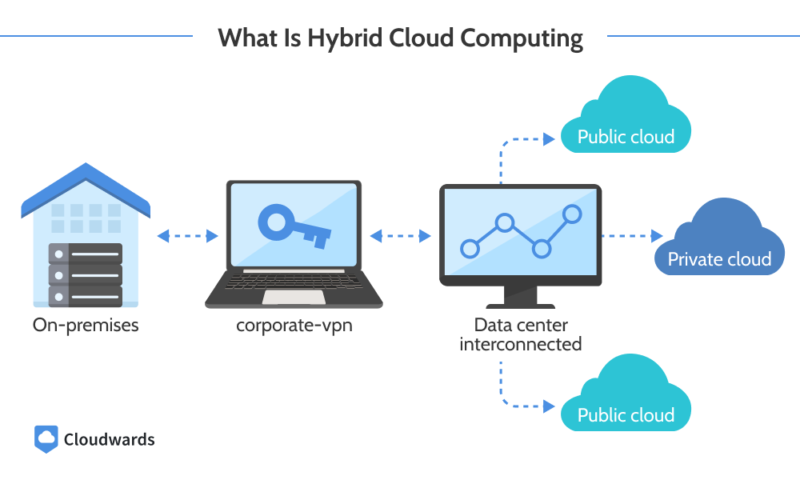
In many cases, the private cloud components of a hybrid cloud environment cover security and control, while the public cloud components are suited for scalability and accessibility.
In a hybrid cloud, you’ll find that sensitive workloads are typically reserved for the private cloud, whereas non-sensitive workloads are reserved for the public cloud. When available, people can also bring their on-premises licenses to get discounts for in-cloud licenses.
Public Cloud vs Private Cloud vs Hybrid Cloud
Public cloud is the most accessible cloud deployment model; it’s an environment that rents computing resources to the general public over the internet. Private cloud — the most restricted cloud deployment model — involves computing resources that are available only to users or organizations within a private network.
Hybrid cloud is a combination of private and public types of cloud computing, and its accessibility depends on the relative combination of its private and public components.
Hybrid Cloud Architecture
The main components of hybrid cloud architecture include private cloud, public cloud, networking, security, management tools and orchestration software.
How Does a Hybrid Cloud Work?
Hybrid cloud works by creating connections between public and private cloud resources. Since private clouds use private networks, connections between the public cloud resources and the private cloud are tunneled through channels like VPNs to maintain privacy and security. To facilitate this communication, the architecture uses APIs and API gateways for API management.
The distribution of workloads across hybrid cloud resources is based on the best-fit model. For instance, workloads requiring the highest level of privacy and security are often reserved for private cloud or on-premises resources, while those designed for public access are served from the public cloud.
To ensure data consistency across the private cloud and public cloud, hybrid cloud environments include data replication and synchronization tools. In addition to enhancing data consistency, replication improves data availability while reducing the chances of permanent data loss.
Managing a hybrid cloud’s private and public environments in isolation can be inefficient and may affect consistency. Thus, hybrid clouds usually include centralized management tools for concurrent visibility into their private and public cloud resources.
Hybrid Cloud vs Multicloud
Hybrid cloud is a cloud environment that mixes single cloud vs multi cloud, private and public cloud resources, maximizing their individual benefits. On the other hand, multicloud is a cloud environment that combines resources from multiple public cloud providers. For example, using cloud services from AWS, Azure and IBM Cloud constitutes a multicloud environment.
Hybrid cloud and multi cloud strategy aren’t mutually exclusive; multicloud deployments can be public or hybrid cloud depending on the resource accessibility. In other words, if you use only public cloud resources across many cloud providers, your multicloud deployment is also a public cloud. However, if you use a combination of public and private cloud resources, it’s a hybrid cloud.
The primary advantage of hybrid cloud is that it optimizes workloads by serving them from best-fit deployment environments. On the other hand, multicloud deployments prevent vendor lock-in while broadening your scope and promoting advancements. That said, both hybrid cloud and multicloud deployments can help with cost optimization.
Hybrid Cloud Examples
Hybrid cloud examples are common in business sectors that handle sensitive information, including healthcare, government bodies, and banking and finance. You may also find them in industries that need large-scale computing to support workloads that go beyond the limits of the existing infrastructure.
In the healthcare sector, the private cloud or on-premises infrastructure houses critical health data and sensitive patient records, and the public cloud handles non-sensitive workloads.
Financial institutions manage sensitive information for customers and businesses. For extra security, most critical data stays in on-premises or private cloud resources, while non-sensitive data, like general business information, stays in the public cloud. You may also use the public cloud for backup and disaster recovery to avoid permanent data loss if the private cloud takes a hit.
Retail businesses can leverage the public cloud’s scalability and durability for high-traffic periods, such as Black Friday, and retain sensitive customer and business information in the private cloud.
Likewise, governments can use the hybrid cloud model to keep critical citizen records, like social identification information, in their private cloud while building public systems, like tax systems, in their public cloud.
Hybrid Cloud Use Cases
Hybrid cloud use cases include disaster recovery and backup, cloud bursting, big data, content delivery, AI and machine learning, and so on.
- Disaster recovery and backup: To avoid permanent data loss when on-premises infrastructure is hit by disaster, you can back up your data and set up a disaster recovery system in the public cloud. This eliminates the risk of having a single point of failure.
- Cloud bursting: Cloud bursting is a method that redirects traffic from on-premises data centers to the public cloud when traffic exceeds the on-premises capacity. Retail businesses benefit from this use case particularly during high sale volume periods.
- Big data: The computing power needed to analyze large datasets typically exceeds the on-premises capacity. Such workloads are deployed in public clouds, where the scalability can support the analysis of big data.
- Content delivery: Media and content distribution companies can facilitate efficient, rapid content delivery to their users using a content delivery network from public clouds with their existing on-premises infrastructure.
- AI and machine learning: Instead of replacing or upgrading your existing resources, you can combine innovative AI and machine learning services from public cloud providers with your private infrastructure and leverage both models.
Advantages and Disadvantages of Hybrid Cloud
Assessing the advantages and disadvantages of hybrid cloud can help you develop an optimal architecture as you get to weigh the risks and benefits, and fine-tune your approach to suit your needs. Below, we examine some of the benefits and drawbacks of hybrid cloud:
Hybrid Cloud Benefits
The advantages of hybrid cloud include improved security, enhanced control, optimized resource performance and accelerated innovation.
- Improved security: When you add private cloud resources for sensitive workloads into an architecture that uses only public resources, you will improve security. Keeping sensitive workloads off the public internet and within a restricted network reduces your architecture’s attack surface.
- Enhanced control: With public cloud resources, your ability to configure and customize your underlying resources is limited. However, adding some private cloud or on-prem resources to the environment gives you more control over how your compute works.
- Optimized resource performance: Distributing workloads between private and public cloud resources based on demand reduces the risk of underprovisioning or overprovisioning your resources. For instance, you can execute big data workloads with the public cloud environment where resources can scale to meet their demands.
- Accelerated innovation: Expanding and innovating within a private cloud is costly; you must buy new software and upgrade your infrastructure at a rate that may not be sustainable for your business. However, using public cloud with your private infrastructure lets you access new tools, infrastructure and services to drive your own innovation.
Hybrid Cloud Drawbacks
The disadvantages of hybrid cloud include things like complex architecture, high starting costs and potential security issues.
- Complex architecture: Combining and managing a private cloud and a public cloud can be complex because of their distinct environments.
- High starting costs: The initial costs of setting up a private cloud are very high; you have to spend on hardware, software and expertise.
- Potential security issues: If you add public cloud resources to a private cloud, you may expose the whole environment to some vulnerability, especially during data transfers from the private cloud to the public cloud.
Hybrid Cloud Security
Hybrid cloud security challenges stem from an increased attack surface due to having multiple environments and being exposed to the public cloud’s internet. Besides that, hybrid cloud architecture can get complex, increasing the likelihood of configuration errors — especially network configurations. With such flaws come higher security risks.
When you add public cloud resources to your private infrastructure, you cede some control over your overall infrastructure. This limited control over the public cloud may require you to work with the cloud provider’s configurations, which might not be the best for your security needs.
Furthermore, expanding from on-prem to hybrid by including public cloud resources will cause your computing environment to grow. As a result, you may have less visibility over your whole infrastructure, especially since some levels of public cloud are abstracted. With lower visibility, you won’t be as proactive against security threats.
All in all, implementing robust access controls, data security, network security and security incident response — along with thorough visibility management via logging and monitoring — helps reduce these risks and prevent disaster.
How to Set Up a Hybrid Cloud
To set up a hybrid cloud, assess your current environment for opportunities that can be achieved through a hybrid cloud environment. Also, examine your current architecture and work out a hybrid architecture that will favor an uncomplicated transition; you must work out the network topology for your hybrid cloud, among other architectural details.
Besides that, evaluate your workloads for their best-fit environment and build your hybrid cloud strategy. Generally, sensitive workloads should stay in the private cloud and non-sensitive ones can go to the public cloud. Then, choose the cloud provider or providers that most align with your goals, design a robust security system and pick your technologies.
Hybrid Cloud Solutions and Management Tools
Some hybrid cloud solutions and management tools include AWS Outposts, Google Anthos, Azure Arc and Terraform.
1. AWS Outposts
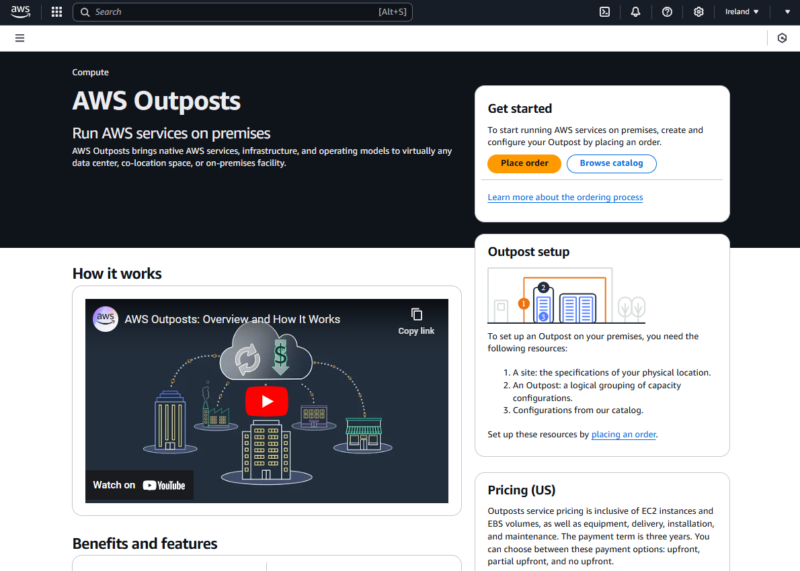
AWS Outposts is a service that offers the same infrastructure and tools available in the AWS public cloud for private deployment. Since AWS Outpost’s hardware, tools and APIs match those found in the AWS public cloud, extending your existing AWS environment to the hybrid model is mostly seamless.
2. Google Anthos
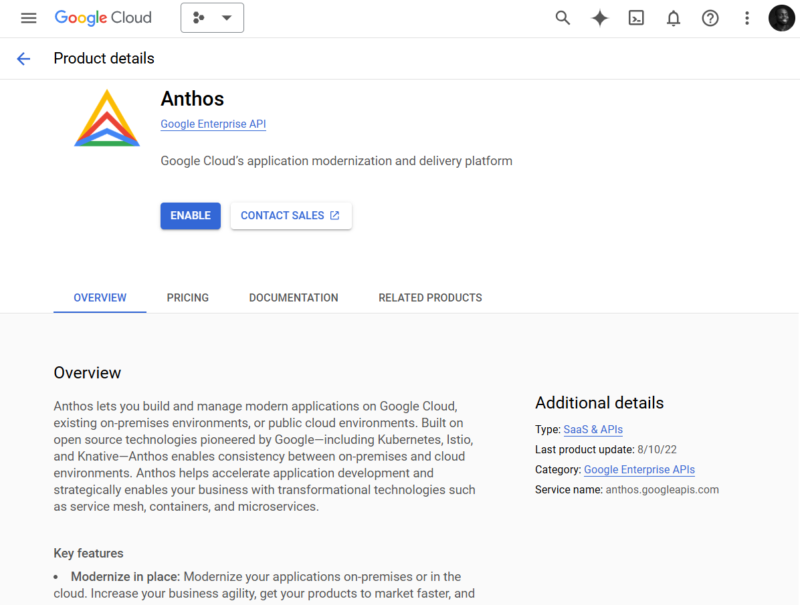
Google Anthos is a service that allows the deployment of containers across various environments, including cloud and on-premises. It has a layer of Google Kubernetes Engine built into it, which supports container deployment both on-premises and on other cloud provider platforms.
3. Azure Arc
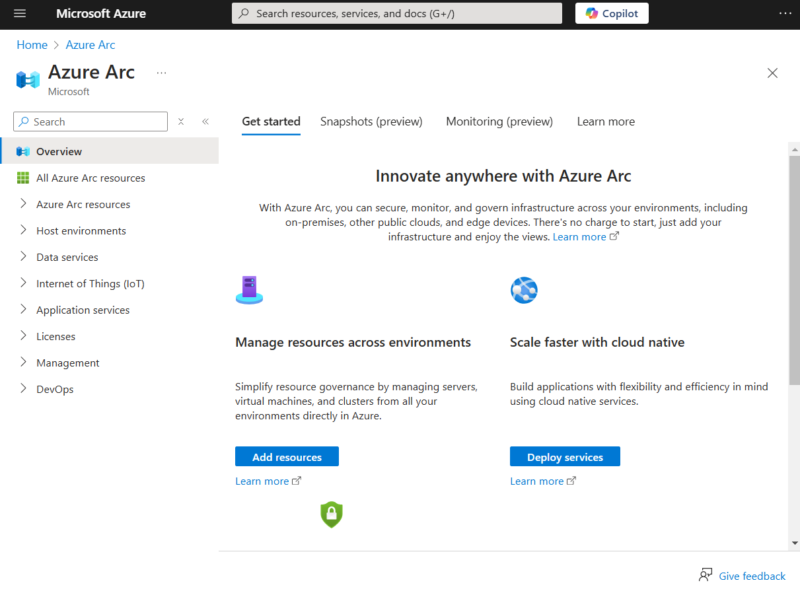
Azure Arc is used for centralized management across cloud environments, whether hybrid cloud or multicloud. It ensures consistency across your environments while managing Kubernetes clusters and configuring managed security, monitoring and updates.
4. Terraform
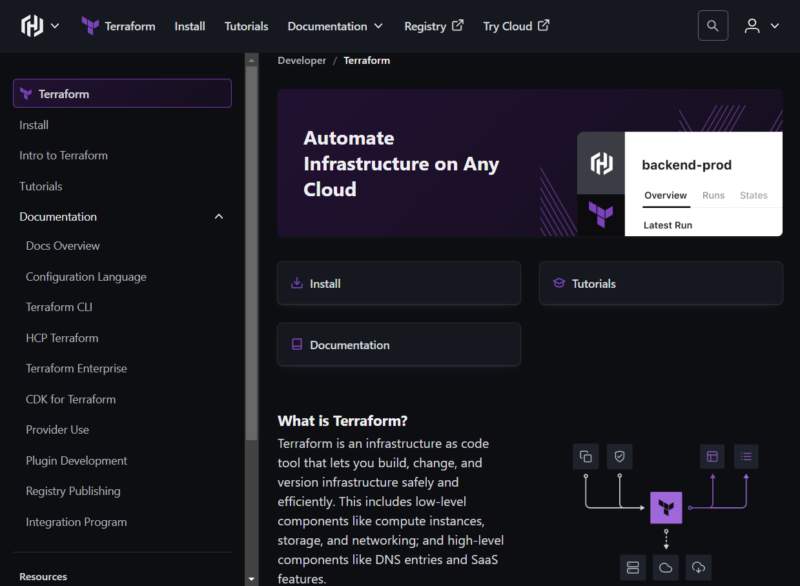
Terraform is a source-available Infrastructure-as-Code tool from HashiCorp. It allows for consistent results when you deploy the same infrastructure in different environments as its configurations follow an idempotent approach.
Final Thoughts
Hybrid cloud optimizes cloud computing by making the best of private cloud and public cloud. It offers enhanced security, deeper control and optimized performance while fostering innovation. However, it could get complex, and the initial costs of private cloud hardware are typically high.
Considering the security benefits of hybrid cloud, do you think the initial costs of setting up a private cloud are worth it? Will you be migrating to a hybrid cloud deployment anytime soon? If so, let us know some of the tools you’re considering. Share your thoughts below, and thanks for reading.
FAQ: Hybrid Cloud Meaning
Hybrid cloud in AWS involves combining on-premises infrastructure with AWS infrastructure and services.
Yes, Netflix is a hybrid cloud, as it combines on-premises storage with Amazon S3, AWS’ object storage solution.
No, Azure is primarily a public cloud. However, it offers hybrid cloud solutions, including services such as Azure Dedicated Host.
No, Gmail is not an example of hybrid cloud; it is a public cloud service.

